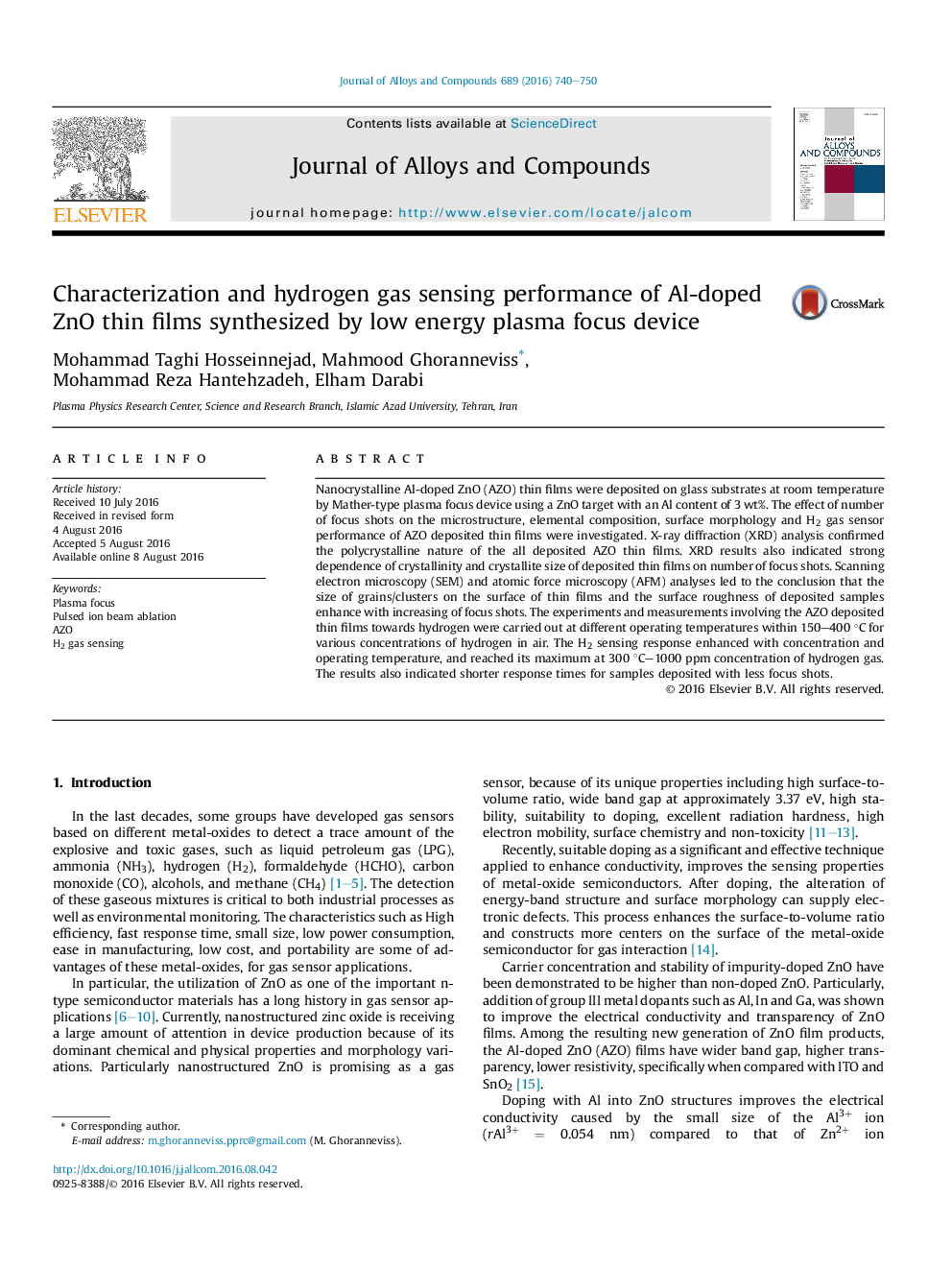| Article ID | Journal | Published Year | Pages | File Type |
|---|---|---|---|---|
| 1605195 | Journal of Alloys and Compounds | 2016 | 11 Pages |
•Using a low energy (1.3 kJ) plasma focus device for fabrication of AZO gas sensors.•Demonstrating that grain size and surface roughness increase with number of shots.•Observation of conglomeration of grains by increasing the number of shots.•The effect of operating temperature and H2 gas concentration investigated.•The decreasing of H2 sensing response and the increasing of response time with more shots.
Nanocrystalline Al-doped ZnO (AZO) thin films were deposited on glass substrates at room temperature by Mather-type plasma focus device using a ZnO target with an Al content of 3 wt%. The effect of number of focus shots on the microstructure, elemental composition, surface morphology and H2 gas sensor performance of AZO deposited thin films were investigated. X-ray diffraction (XRD) analysis confirmed the polycrystalline nature of the all deposited AZO thin films. XRD results also indicated strong dependence of crystallinity and crystallite size of deposited thin films on number of focus shots. Scanning electron microscopy (SEM) and atomic force microscopy (AFM) analyses led to the conclusion that the size of grains/clusters on the surface of thin films and the surface roughness of deposited samples enhance with increasing of focus shots. The experiments and measurements involving the AZO deposited thin films towards hydrogen were carried out at different operating temperatures within 150–400 °C for various concentrations of hydrogen in air. The H2 sensing response enhanced with concentration and operating temperature, and reached its maximum at 300 °C–1000 ppm concentration of hydrogen gas. The results also indicated shorter response times for samples deposited with less focus shots.
Graphical abstractFigure optionsDownload full-size imageDownload as PowerPoint slide
